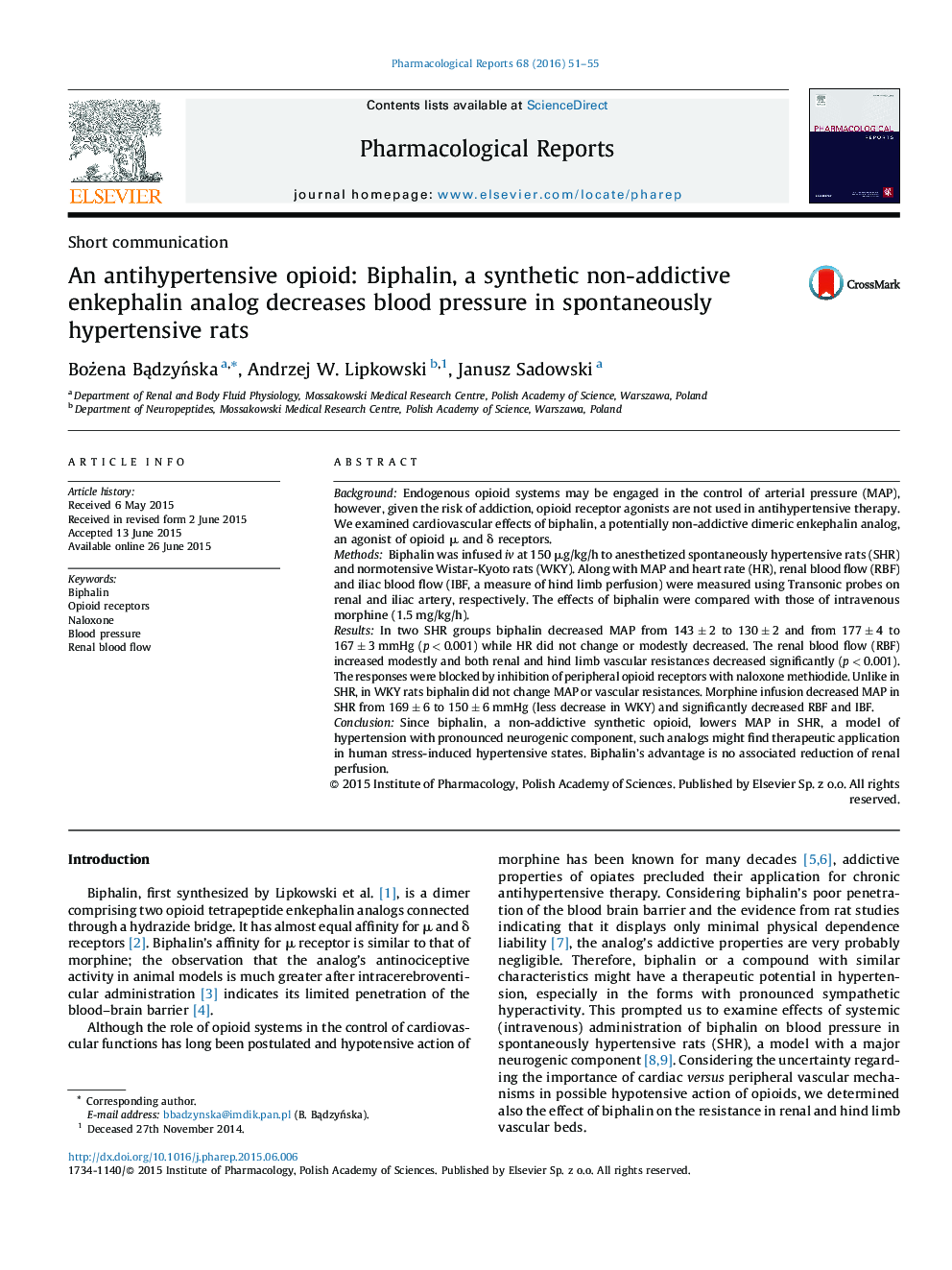| Article ID | Journal | Published Year | Pages | File Type |
|---|---|---|---|---|
| 2010398 | Pharmacological Reports | 2016 | 5 Pages |
BackgroundEndogenous opioid systems may be engaged in the control of arterial pressure (MAP), however, given the risk of addiction, opioid receptor agonists are not used in antihypertensive therapy. We examined cardiovascular effects of biphalin, a potentially non-addictive dimeric enkephalin analog, an agonist of opioid μ and δ receptors.MethodsBiphalin was infused iv at 150 μg/kg/h to anesthetized spontaneously hypertensive rats (SHR) and normotensive Wistar-Kyoto rats (WKY). Along with MAP and heart rate (HR), renal blood flow (RBF) and iliac blood flow (IBF, a measure of hind limb perfusion) were measured using Transonic probes on renal and iliac artery, respectively. The effects of biphalin were compared with those of intravenous morphine (1.5 mg/kg/h).ResultsIn two SHR groups biphalin decreased MAP from 143 ± 2 to 130 ± 2 and from 177 ± 4 to 167 ± 3 mmHg (p < 0.001) while HR did not change or modestly decreased. The renal blood flow (RBF) increased modestly and both renal and hind limb vascular resistances decreased significantly (p < 0.001). The responses were blocked by inhibition of peripheral opioid receptors with naloxone methiodide. Unlike in SHR, in WKY rats biphalin did not change MAP or vascular resistances. Morphine infusion decreased MAP in SHR from 169 ± 6 to 150 ± 6 mmHg (less decrease in WKY) and significantly decreased RBF and IBF.ConclusionSince biphalin, a non-addictive synthetic opioid, lowers MAP in SHR, a model of hypertension with pronounced neurogenic component, such analogs might find therapeutic application in human stress-induced hypertensive states. Biphalin's advantage is no associated reduction of renal perfusion.
